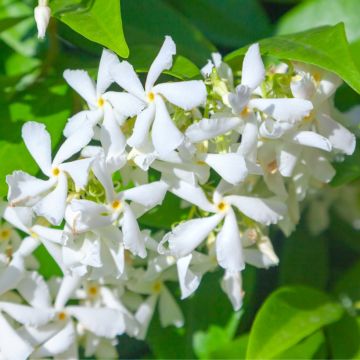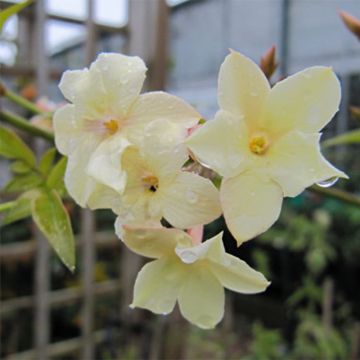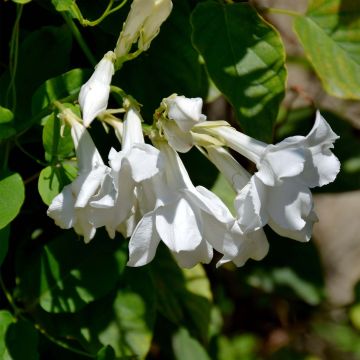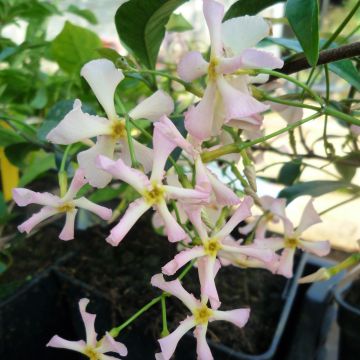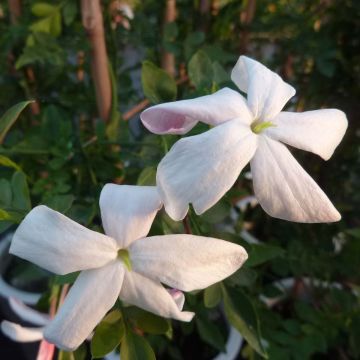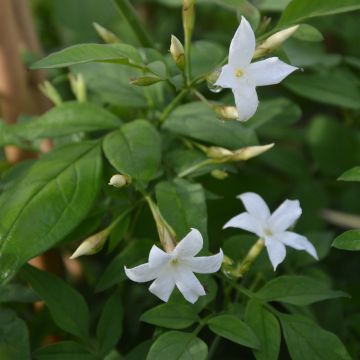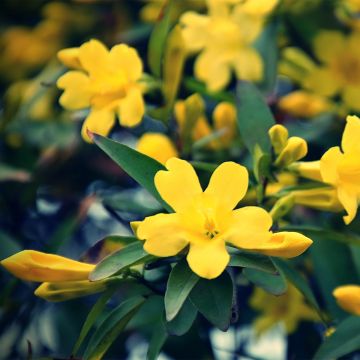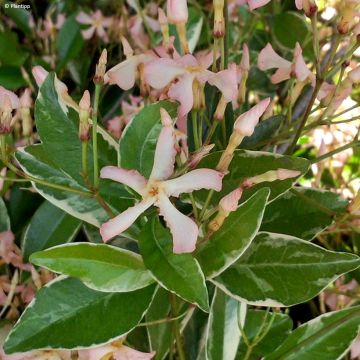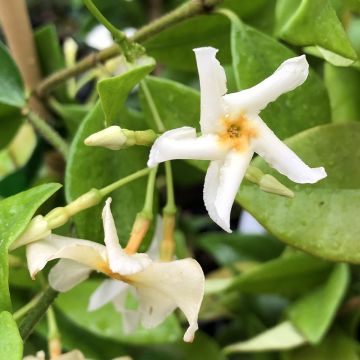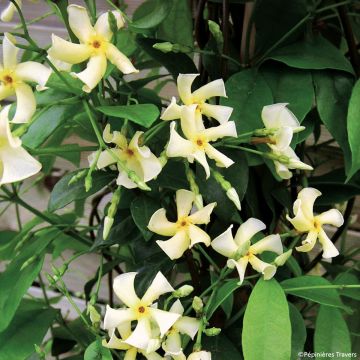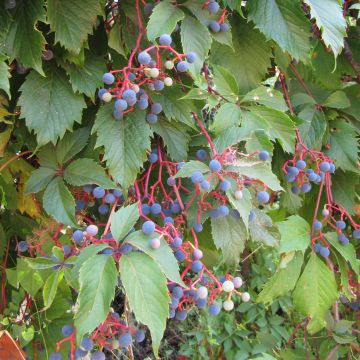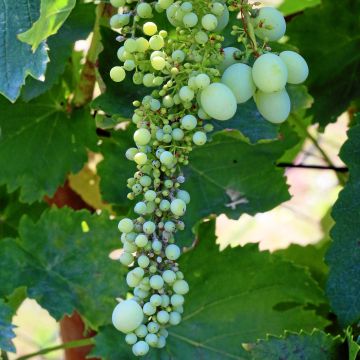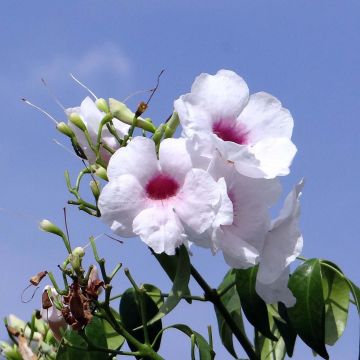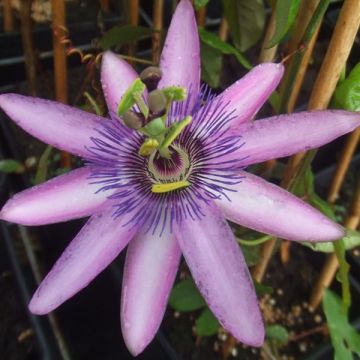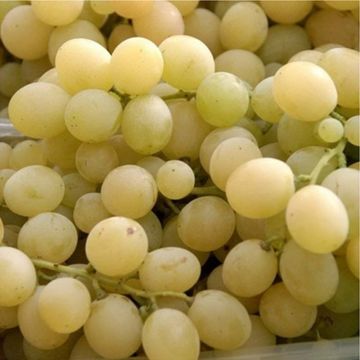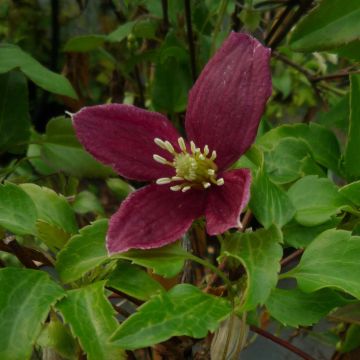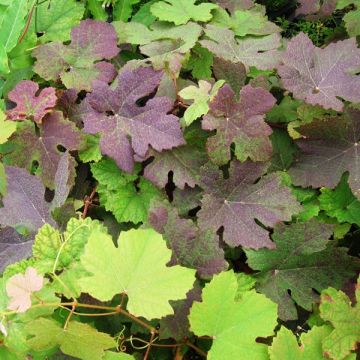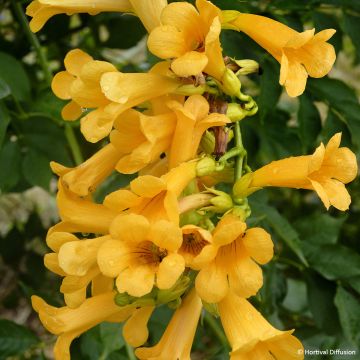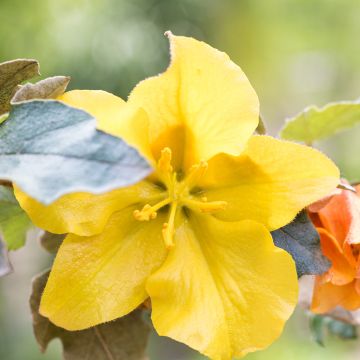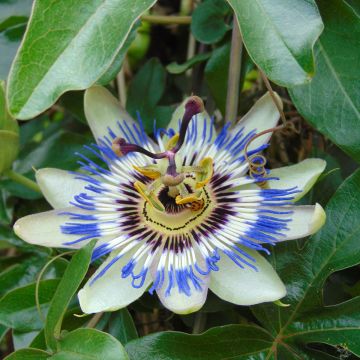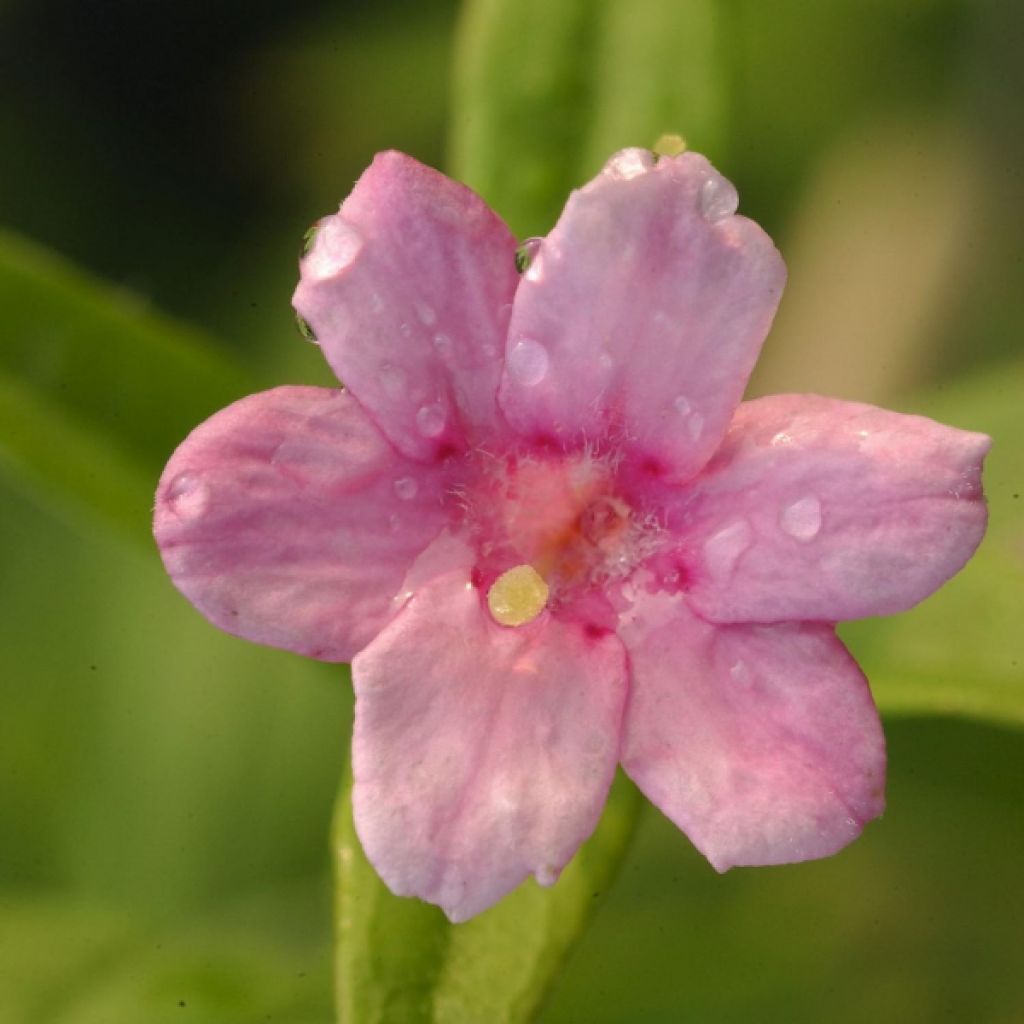

Jasminum x stephanense
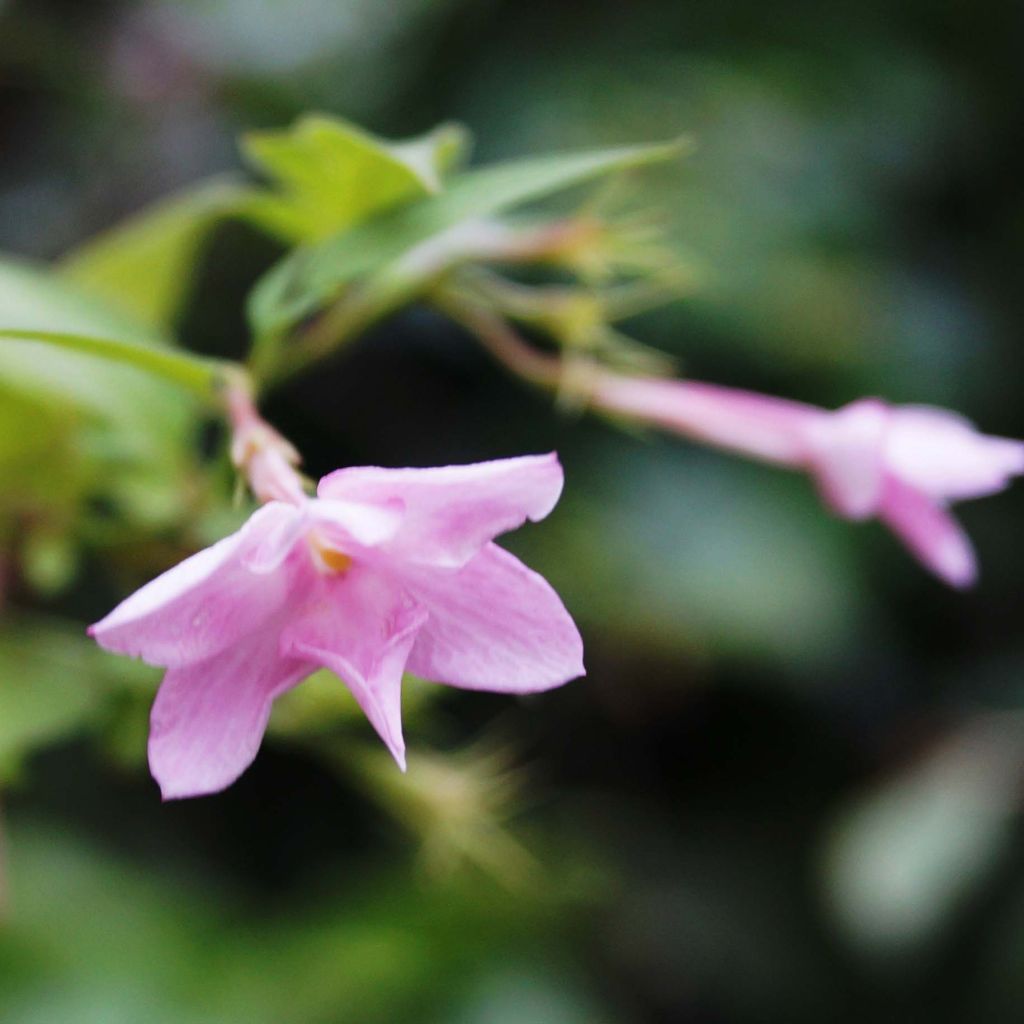

Jasminum x stephanense
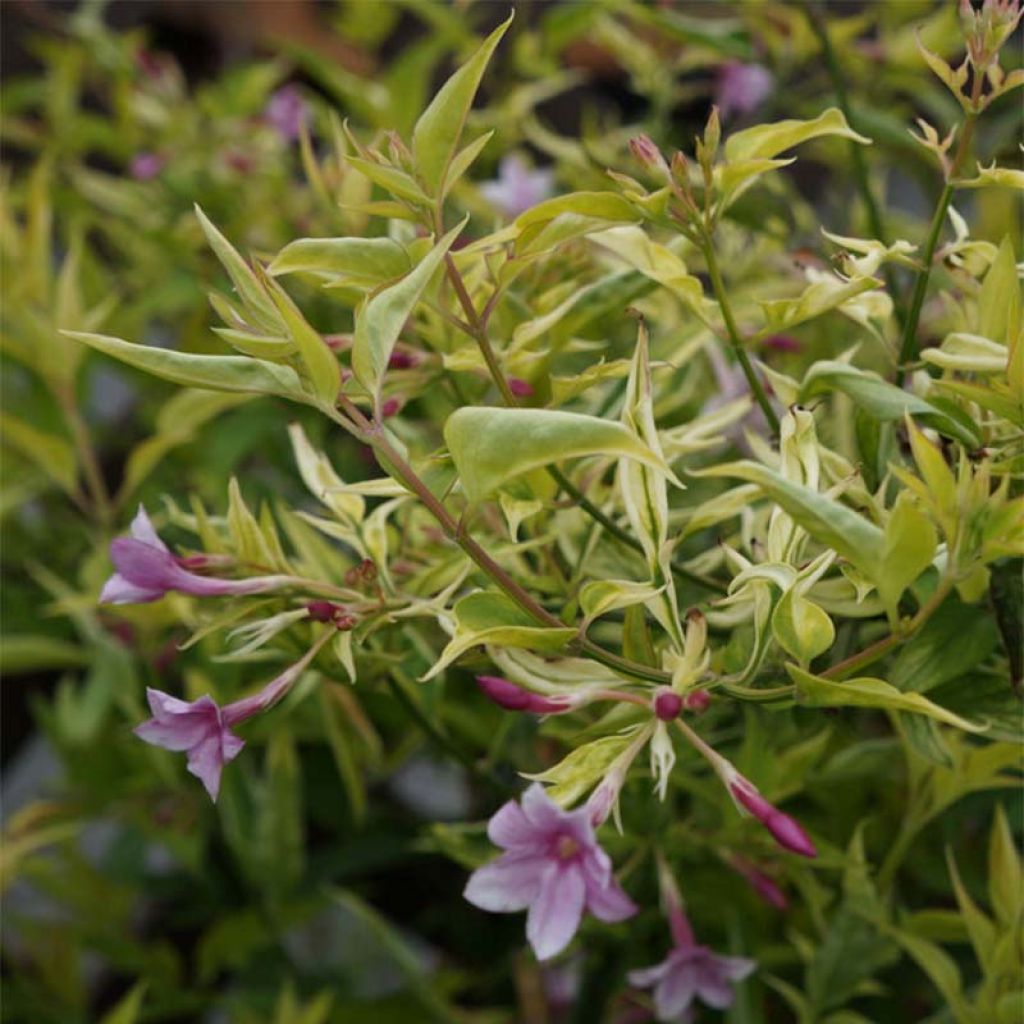

Jasminum x stephanense
Jasminum x stephanense
Jasminum x stephanense
Pink Summer Jasmine, Stephan Jasmine
2 poor, scrawny stems!
Yvette , 29/06/2024
This item cannot be shipped to the selected country
Delivery charge from €5.90
Delivery charge from €5.90
More information
Schedule delivery date,
and select date in basket
This plant carries a 24 months recovery warranty
More information
We guarantee the quality of our plants for a full growing cycle, and will replace at our expense any plant that fails to recover under normal climatic and planting conditions.
From €5.90 for pickup delivery and €6.90 for home delivery
Express home delivery from €8.90.
From €5.90 for pickup delivery and €6.90 for home delivery
Express home delivery from €8.90.

Does this plant fit my garden?
Set up your Plantfit profile →
Description
Jasminum x stephanense, sometimes called the Stephan jasmine or pink jasmine, is an unusual variety, a natural hybrid between the common jasmine, which has passed on its fragrance, and the Jasminum beesianum, from which it inherited its pink colour and resistance. This vigorous climbing shrub will seduce with the generosity of its flowering, which is renewed throughout the summer, as well as its willingness to grow in fairly dry soils in summer. You can train it on a trellis, a fence, or even against the trunk of a small tree. It can also be grown in a large pot.
The pink jasmine belongs to the Oleaceae family. From its stump, the plant produces very long square-sectioned green stems, which can measure up to 5m (16 ft 5 in) in length under optimal conditions. These stems which are quite flexible when young, are unable to cling to a support, they simply weave between neighbouring branches. The overall habit can be a bit disorderly. The foliage is deciduous in normal climates and evergreen when winters are mild. It is composed of small varied leaves, which can be divided into 3 to 9 lanceolate leaflets. They are light green and the young shoots are sometimes variegated with cream. Flowering begins in June and can be renewed in successive waves until early September if the soil remains moist. The flowers are small, tubular and star-shaped, 2cm (0.8 in) long, with a fresh pink colour and a slight fragrance, appearing at the axils of the leaves. The reverse side of the flowers and the flower buds are a deeper shade of pink. The crown of the mature Jasmin stephanense can withstand short frosts of around -12°C (10.4°F), if well sheltered under mulch. When the vegetation freezes, the plant regrows from the crown in spring, but its flowering may be slightly delayed.
Jasminum x stephanense climbs over bushes, trellises, arches, pergolas, staircase railings, or balconies. You can also plant it in a container on a terrace to fully enjoy its fragrant exuberance. Allow some space for this vigorous plant. One of the best uses is to plant it in an evergreen hedge: in winter, its bare branches will blend into the vegetation, while in summer, delicate garlands of light foliage and small pink stars will elegantly dress it. You can associate it with a montana clematis or a pink or white climbing rose, for example.
Report an error about the product description
Jasminum x stephanense in pictures


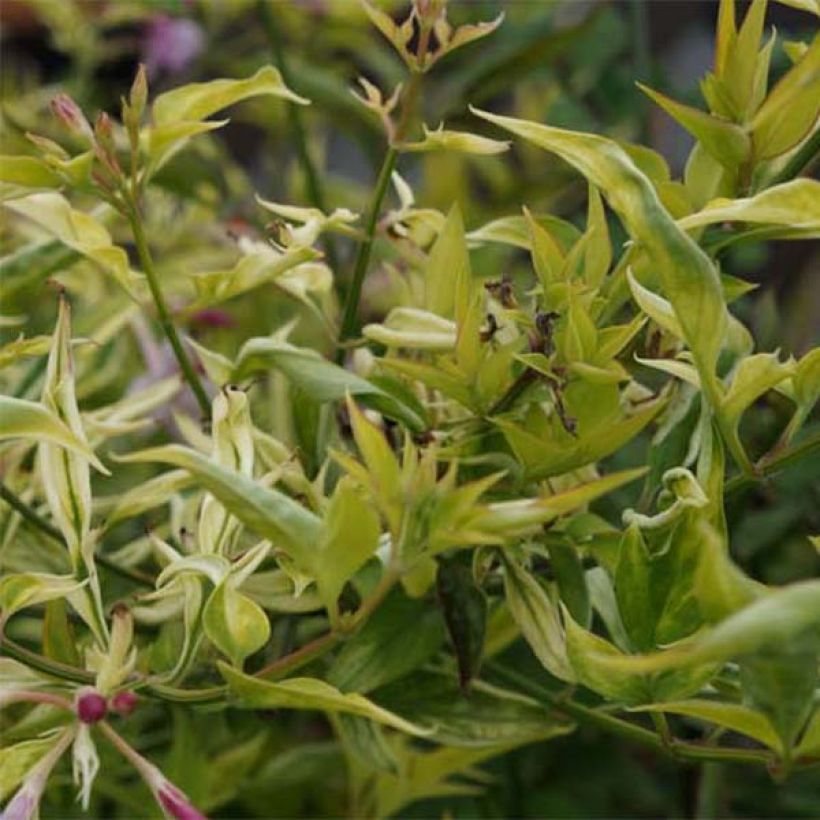

Plant habit
Flowering
Foliage
Botanical data
Jasminum
x stephanense
Olaceae
Pink Summer Jasmine, Stephan Jasmine
Cultivar or hybrid
Other Jasmine
Planting and care
Easy to grow in any rich and well-prepared soil, this jasmine tolerates winter temperatures around -12°C (10.4 °F) if the crown is well protected. It can even withstand a night or two at around -15°C (5 °F) to -17°C (1.4 °F), but no more. It especially dislikes long periods (more than 2 to 3 weeks) of cold temperatures below -10°C (14 °F) to -12°C (10.4 °F). It appreciates the addition of compost in spring. The pink jasmine withstands summer drought well. However, some watering will support its flowering. Like all jasmines, it needs to be pruned from time to time, which rejuvenates the plant.
Planting period
Intended location
Care
-
, onOrder confirmed
Reply from on Promesse de fleurs
Mediterranean climbers
Haven't found what you were looking for?
Hardiness is the lowest winter temperature a plant can endure without suffering serious damage or even dying. However, hardiness is affected by location (a sheltered area, such as a patio), protection (winter cover) and soil type (hardiness is improved by well-drained soil).

Photo Sharing Terms & Conditions
In order to encourage gardeners to interact and share their experiences, Promesse de fleurs offers various media enabling content to be uploaded onto its Site - in particular via the ‘Photo sharing’ module.
The User agrees to refrain from:
- Posting any content that is illegal, prejudicial, insulting, racist, inciteful to hatred, revisionist, contrary to public decency, that infringes on privacy or on the privacy rights of third parties, in particular the publicity rights of persons and goods, intellectual property rights, or the right to privacy.
- Submitting content on behalf of a third party;
- Impersonate the identity of a third party and/or publish any personal information about a third party;
In general, the User undertakes to refrain from any unethical behaviour.
All Content (in particular text, comments, files, images, photos, videos, creative works, etc.), which may be subject to property or intellectual property rights, image or other private rights, shall remain the property of the User, subject to the limited rights granted by the terms of the licence granted by Promesse de fleurs as stated below. Users are at liberty to publish or not to publish such Content on the Site, notably via the ‘Photo Sharing’ facility, and accept that this Content shall be made public and freely accessible, notably on the Internet.
Users further acknowledge, undertake to have ,and guarantee that they hold all necessary rights and permissions to publish such material on the Site, in particular with regard to the legislation in force pertaining to any privacy, property, intellectual property, image, or contractual rights, or rights of any other nature. By publishing such Content on the Site, Users acknowledge accepting full liability as publishers of the Content within the meaning of the law, and grant Promesse de fleurs, free of charge, an inclusive, worldwide licence for the said Content for the entire duration of its publication, including all reproduction, representation, up/downloading, displaying, performing, transmission, and storage rights.
Users also grant permission for their name to be linked to the Content and accept that this link may not always be made available.
By engaging in posting material, Users consent to their Content becoming automatically accessible on the Internet, in particular on other sites and/or blogs and/or web pages of the Promesse de fleurs site, including in particular social pages and the Promesse de fleurs catalogue.
Users may secure the removal of entrusted content free of charge by issuing a simple request via our contact form.
The flowering period indicated on our website applies to countries and regions located in USDA zone 8 (France, the United Kingdom, Ireland, the Netherlands, etc.)
It will vary according to where you live:
- In zones 9 to 10 (Italy, Spain, Greece, etc.), flowering will occur about 2 to 4 weeks earlier.
- In zones 6 to 7 (Germany, Poland, Slovenia, and lower mountainous regions), flowering will be delayed by 2 to 3 weeks.
- In zone 5 (Central Europe, Scandinavia), blooming will be delayed by 3 to 5 weeks.
In temperate climates, pruning of spring-flowering shrubs (forsythia, spireas, etc.) should be done just after flowering.
Pruning of summer-flowering shrubs (Indian Lilac, Perovskia, etc.) can be done in winter or spring.
In cold regions as well as with frost-sensitive plants, avoid pruning too early when severe frosts may still occur.
The planting period indicated on our website applies to countries and regions located in USDA zone 8 (France, United Kingdom, Ireland, Netherlands).
It will vary according to where you live:
- In Mediterranean zones (Marseille, Madrid, Milan, etc.), autumn and winter are the best planting periods.
- In continental zones (Strasbourg, Munich, Vienna, etc.), delay planting by 2 to 3 weeks in spring and bring it forward by 2 to 4 weeks in autumn.
- In mountainous regions (the Alps, Pyrenees, Carpathians, etc.), it is best to plant in late spring (May-June) or late summer (August-September).
The harvesting period indicated on our website applies to countries and regions in USDA zone 8 (France, England, Ireland, the Netherlands).
In colder areas (Scandinavia, Poland, Austria...) fruit and vegetable harvests are likely to be delayed by 3-4 weeks.
In warmer areas (Italy, Spain, Greece, etc.), harvesting will probably take place earlier, depending on weather conditions.
The sowing periods indicated on our website apply to countries and regions within USDA Zone 8 (France, UK, Ireland, Netherlands).
In colder areas (Scandinavia, Poland, Austria...), delay any outdoor sowing by 3-4 weeks, or sow under glass.
In warmer climes (Italy, Spain, Greece, etc.), bring outdoor sowing forward by a few weeks.

































